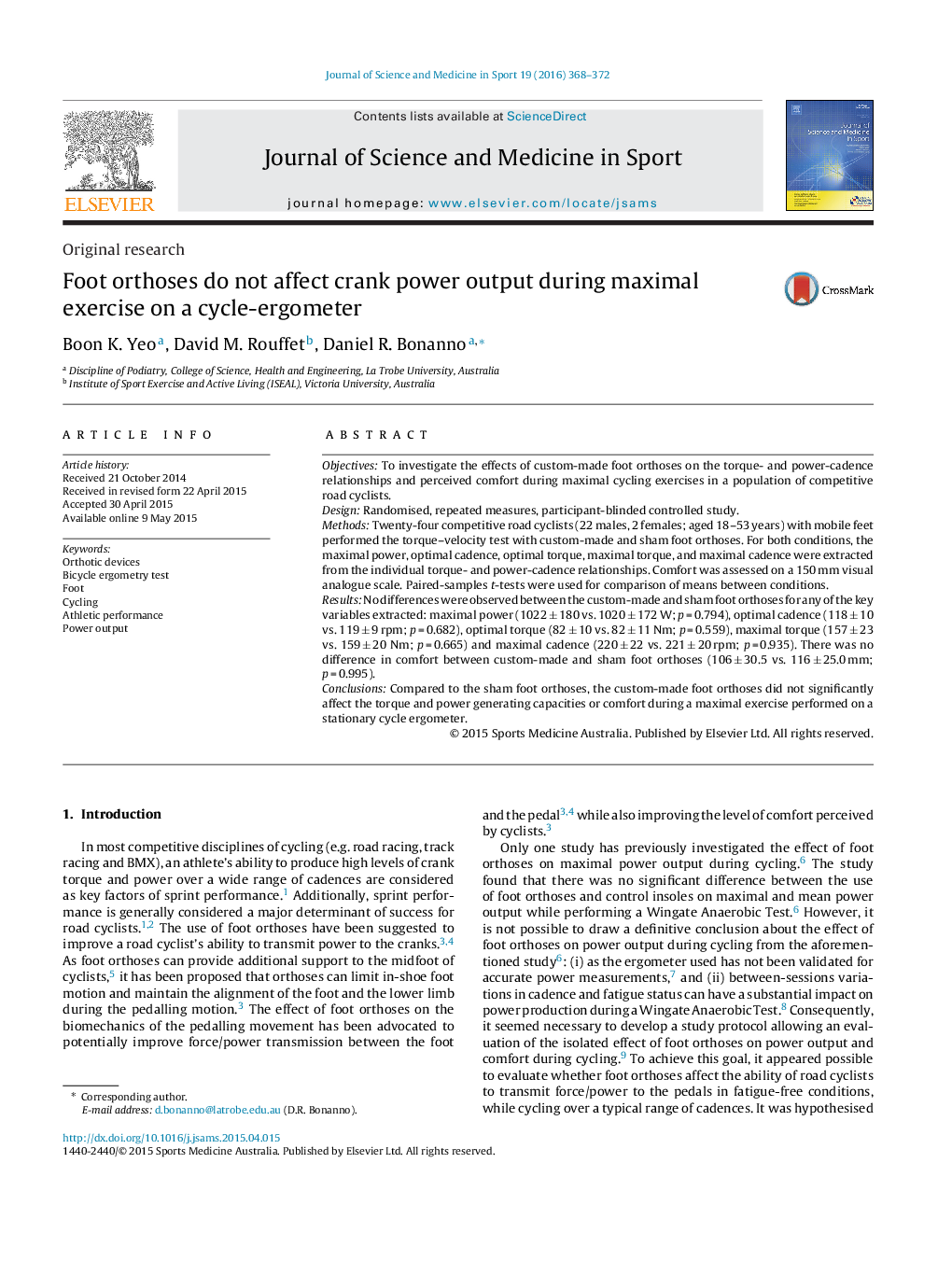| Article ID | Journal | Published Year | Pages | File Type |
|---|---|---|---|---|
| 2700537 | Journal of Science and Medicine in Sport | 2016 | 5 Pages |
ObjectivesTo investigate the effects of custom-made foot orthoses on the torque- and power-cadence relationships and perceived comfort during maximal cycling exercises in a population of competitive road cyclists.DesignRandomised, repeated measures, participant-blinded controlled study.MethodsTwenty-four competitive road cyclists (22 males, 2 females; aged 18–53 years) with mobile feet performed the torque–velocity test with custom-made and sham foot orthoses. For both conditions, the maximal power, optimal cadence, optimal torque, maximal torque, and maximal cadence were extracted from the individual torque- and power-cadence relationships. Comfort was assessed on a 150 mm visual analogue scale. Paired-samples t-tests were used for comparison of means between conditions.ResultsNo differences were observed between the custom-made and sham foot orthoses for any of the key variables extracted: maximal power (1022 ± 180 vs. 1020 ± 172 W; p = 0.794), optimal cadence (118 ± 10 vs. 119 ± 9 rpm; p = 0.682), optimal torque (82 ± 10 vs. 82 ± 11 Nm; p = 0.559), maximal torque (157 ± 23 vs. 159 ± 20 Nm; p = 0.665) and maximal cadence (220 ± 22 vs. 221 ± 20 rpm; p = 0.935). There was no difference in comfort between custom-made and sham foot orthoses (106 ± 30.5 vs. 116 ± 25.0 mm; p = 0.995).ConclusionsCompared to the sham foot orthoses, the custom-made foot orthoses did not significantly affect the torque and power generating capacities or comfort during a maximal exercise performed on a stationary cycle ergometer.
